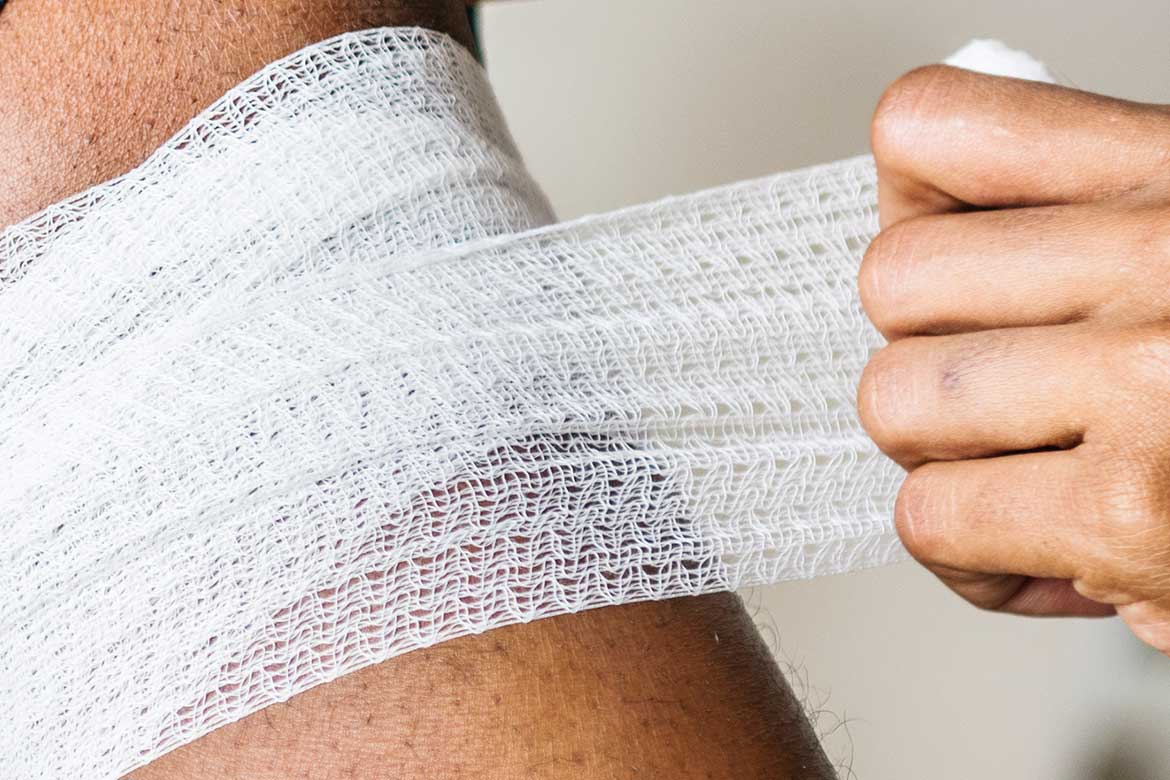14th May, 2024
Your Near Miss Reporting Procedure Needs These 6 Simple Rules
If you are thinking about starting a near-miss reporting system, you need more than a form. A successful near-miss reporting system starts with good design and ends with results. Here are six simple rules that will help you get the most out of your near-miss reporting procedure.

A great near-miss reporting procedure is like having a crystal ball. It can be used to stop accidents before they happen.
Preventing accidents is the goal of any near-miss reporting system.
But a near-miss reporting system is more than just a form. And it will only work if the entire procedure is followed.
The problem is that simply putting together a near-miss form and issuing it to your workforce isn’t an effective near-miss reporting procedure. It's just a piece of paper. Alone, this approach won’t bring you results.
A near miss is a warning sign. An alert for where an accident may happen in the future.
The benefits of identifying common causes of accidents before an accident has the chance to hurt anyone makes sense. You stop pain and suffering. You keep work going. You keep your workforce safe from harm. Win, win, win.
A successful near-miss reporting system starts with good design and ends with results. The system is understood and embraced by everyone, from managers to labourers.
Most importantly, a successful near-miss reporting system leads to improved safety performance.
If you are thinking about starting a near-miss reporting system, you might start with a near-miss form. But you need more than just a form.
If you are wondering why your near-miss reporting is failing, or are having problems getting near-miss reporting to work in your business, these rules will also help you fix it. Here are six simple rules that will help you get the most out of your near-miss reporting procedure:
1. Clear design
Your near-miss reporting system needs to be easy to use.
If your forms or reporting systems are too long or complex, your workers will be deterred from reporting. And for your near-miss reporting to work, it needs to start with everything being reported. If your forms use technical jargon or complex language, you are likely to see a lower quantity and less quality reporting due to confusion over the information required.
Every member of your team needs to use the system for it to work.

Therefore, time must be taken to introduce the procedure to all employees. Simple steps such as explaining what a near miss is, and how to identify hazards and risks at work will help bring in quality near-miss reports that can benefit your organisation.
It's not just your forms that need a clear design - the whole procedure needs to be understood.
2. Quick and simple
Ever have some paperwork to do, but you know it's going to take a long time, so you put it off? You don't want that with your near-miss reporting system!
You need to know about mear misses as soon as they happen - so that you can quickly resolve small issues, and fix serious problems before they cause accidents.
Near miss reporting should not be time-consuming or a hassle, to you or your workforce.
Keep your forms simple and direct, you can always collect more information by investigating the near miss further where required.
3. Penalty-free
Most, if not all, near-miss reporting procedures are penalty-free, and so should yours.
If your workers think that reporting will have negative consequences, your near-miss system will suffer from underreporting.
I'm not letting you know about a problem if I know it will get me in trouble!
There should be no direct punishment simply for reporting a near-miss. After all, this is an obvious deterrent to near-miss reporting and would undermine putting the system in place.
But what about indirect penalties?
While there is no penalty on the worker reporting the near miss, if the near miss report has a negative impact on the department or management, this will put pressure on workers to not report.
It is important to use the near-miss reporting system as a way to make safety improvements rather than apportion blame.
Near-miss reports need to be rewarded and encouraged for the system to succeed.

And what about presumed penalties?
If your workforce thinks that penalties will occur as a result of reporting a near-miss incident, you may develop a problem with underreporting. Perceived penalties can include being viewed as a 'snitch' or a 'grass' by colleagues. Or through not wanting the near miss to reflect badly on themselves or their department.
Workers who do not fully understand the near-miss system may feel like their job is at risk if they are regularly involved in near-miss incidents, or worry about being blamed.
This can be avoided by ensuring that there are no penalties for anyone involved in the near-miss incident, and through encouraging a positive health and safety culture throughout your organisation.
4. Leadership
Leadership is vital for successful health and safety culture change within your organisation. Leadership should start at the very top of the organisation and work its way down through the management hierarchy.
If your workforce on site has not got a proactive leader, taking your message and driving your near-miss reporting system, you are unlikely to see much in the way of results.
Supervisors and managers on-site need to implement the system and take ownership. Simply setting up a near-miss reporting system and sending the forms out to the site is not implementation. Leaders need to show the way.

5. Action
If you have achieved rules 1 - 4 you should now be well on your way to a successful near-miss reporting procedure. However, now you have the ball rolling you need to keep the momentum going to develop a lasting safety initiative.
You have delivered the message of the importance of near-miss reporting, and got over the initial barriers - the near-miss reports start coming in. It is now back to you to take action. There is little point in having the near-miss reports in place if they are not used as an opportunity to improve safety and minimise risks.
Not only does action need to be taken, but it needs to be made visible. If your workforce doesn't see that action is being taken, they may start to lose faith in the system and put less effort into identifying and reporting near misses. After all, if nothing is getting done then why should they bother reporting in the first place?
Remember to keep your workforce involved. Give feedback on the near-miss reports and outline the improvements you have made to reduce risks. Through demonstrating management commitment to the scheme, your workforce will mirror that commitment back at you.
6. Measurement
Measurement is a valuable tool and an essential element of your safety management. If you don’t measure your results, how do you know if your near-miss reporting system is successful or not? Measurement should be used to establish benchmarks and to assess the effectiveness of the near-miss system.
Measure your accidents. You can identify problem areas, and assess the improvements made through the action taken as a result of near-miss reporting.
Measure your near-miss reports. This will allow you to identify patterns and trends in unsafe acts or conditions where further action is necessary.

Measure your success. Success could be through receiving good quality near-miss reports or through making an activity safer as a result of the near-miss system.
Measure your performance. Good performance through the number of near-miss reports received and through a reduction in accident frequency. These measurements should be fed back to your workforce to reinforce the near-miss message and reward the efforts made by your team.
Now you know the six simple rules for a successful near-miss reporting procedure. Use the free near-miss report form to start getting yours in place.
This article was written by Emma at HASpod. Emma has over 10 years experience in health and safety and BSc (Hons) Construction Management. She is NEBOSH qualified and Tech IOSH.
Better health and safety...
We are here to help you and your business put safety in everything.
Learn MoreRecent posts like this...

HSE Fee For Intervention Charges Explained
FFI stands for 'fee for intervention', which was introduced under the Health and Safety (Fees) Regulations 2012. FFI aims to recover the HSE's costs, including inspection, investigation and enforcement action, charging businesses that are in breach of health and safety regulations.
Read Post
How To Plan For Better Health And Safety At Work
If you want better health and safety, you need to plan for it. And who doesn't want to stay safer and have fewer accidents and ill health in their workplace? In this blog post, we look at how to plan for better health and safety at work.
Read Post
No Injuries, No Health And Safety Problems!?
It's been over a year since the last injury in your workplace. But just because you haven't had any accidents doesn't mean you are safe or that your health and safety performance is good. Your accident reporting system might just be hiding the truth. No injuries, no problems!? Don't count on it.
Read Post